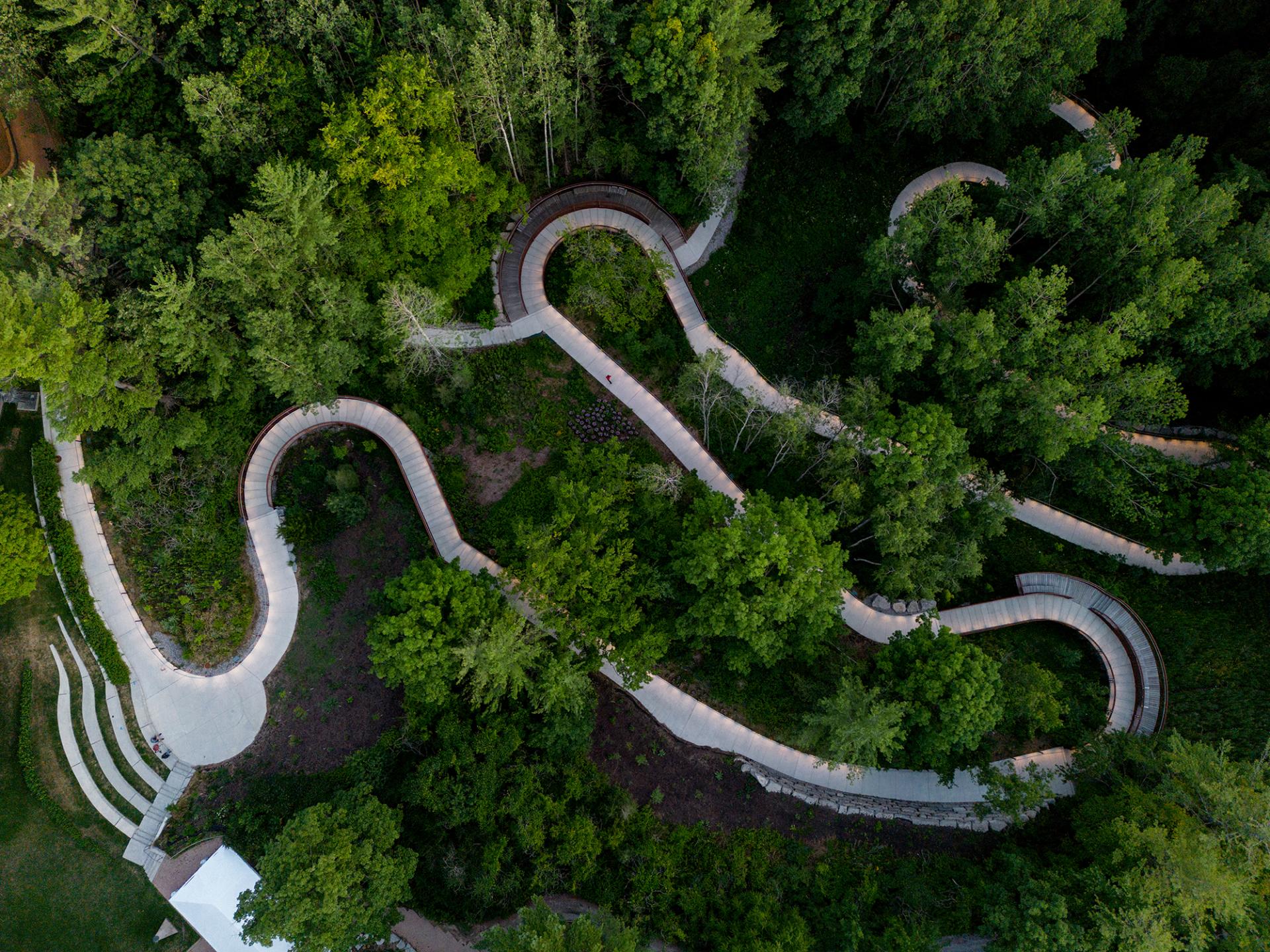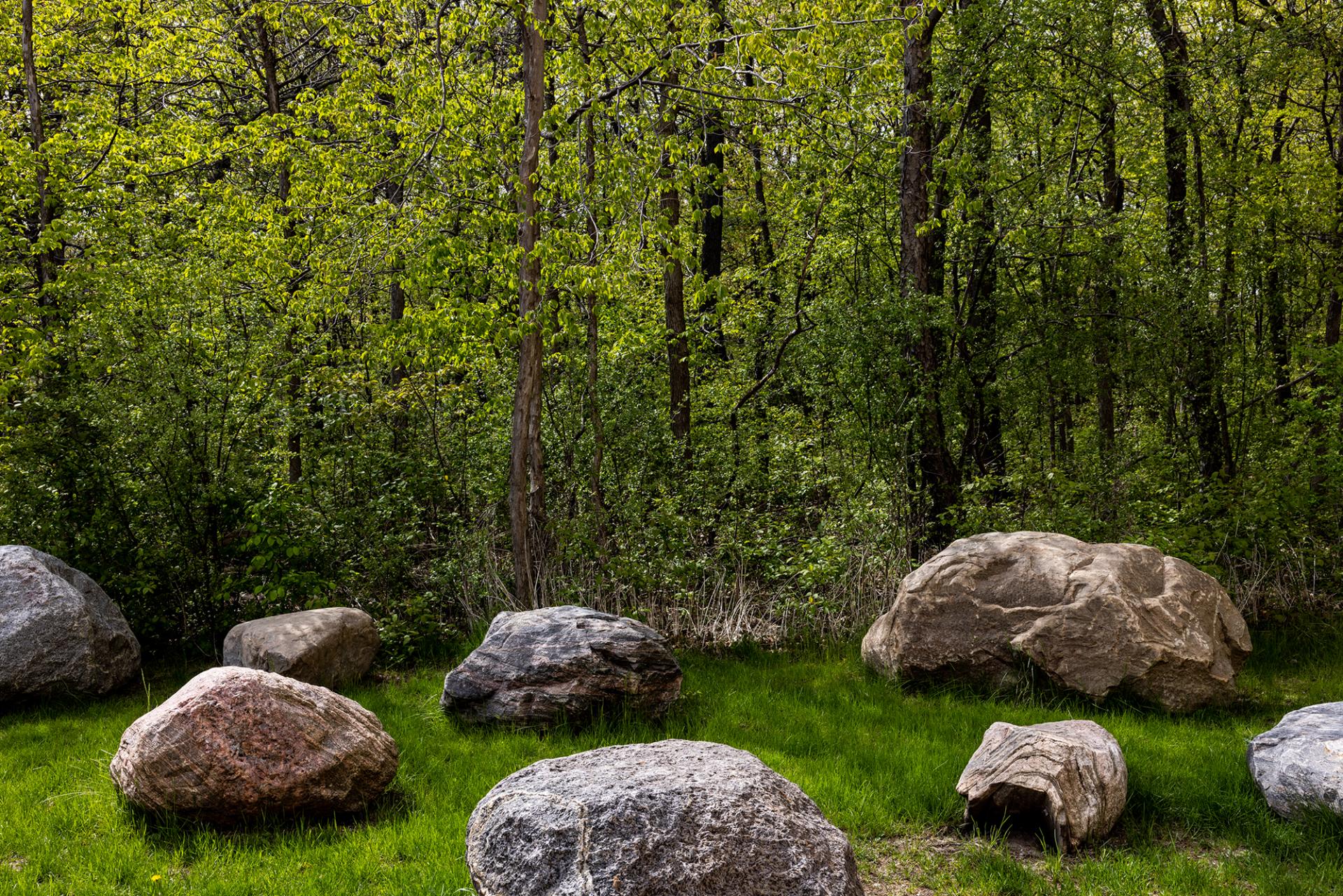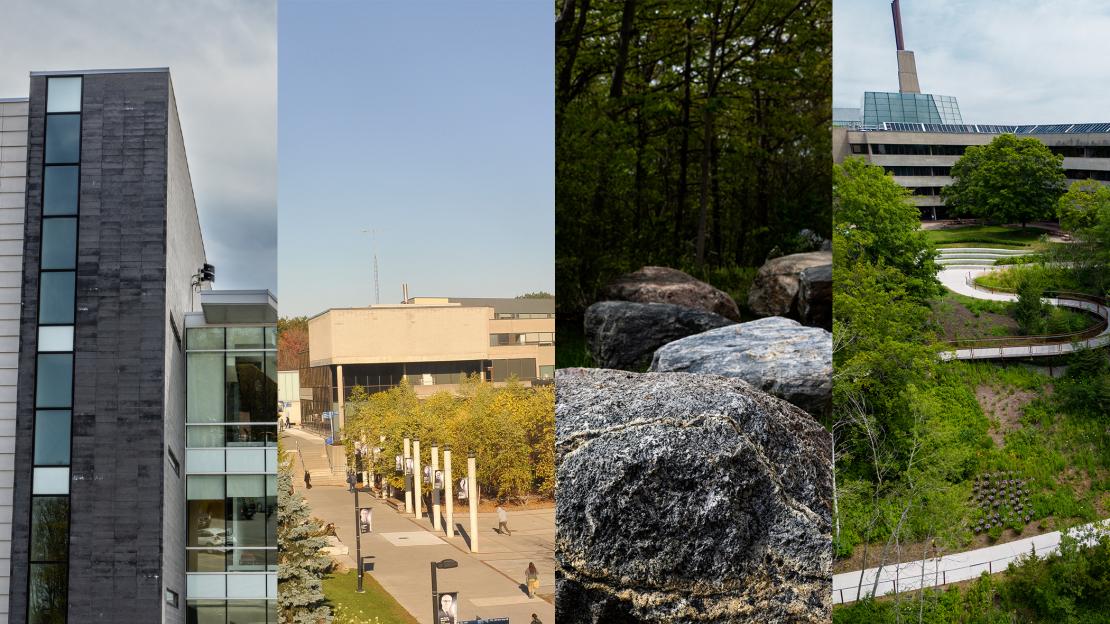Four major campus spaces at U of T Scarborough have either been renamed or had their names translated with Indigenous languages.
The campus’ award-winning public trail (originally the Valley Land Trail) and the Social Sciences Building (MW) now carry new Indigenous names. Meanwhile, two pathways that cut through the heart of the campus — Scholar’s Walk and Rock Walk – will bear both their original English names and their Indigenous language translations.
“This is part of the work invested by the U of T Scarborough’s placemaking framework,” says Kelly Crawford, assistant director of Indigenous initiatives at U of T Scarborough. “These names were decided upon by our community, after going through a detailed process to ensure the chosen Indigenous names were encompassing of the spirit of these spaces.”
Placemaking is the restoration of an Indigenous presence through art and design that is rooted in Indigenous Knowledge, including Indigenous participation and collaboration. Under the direction of the UTSC Truth, Reconciliation and Indigenous Initiatives Advisory Committee (TRIIAC), the UTSC Placemaking Sub-Committee engaged in a consultative process for this initiative.
The following are four major spaces that have been renamed or translated.
Kina Wiiya Enadong Building (formerly MW)
Language: Anishinaabemowin
Meaning: Everyone Spirit Mind (Anishinaabemowin), “Gift of Multiple Perspectives” (English)
The Kina Wiiya Enadong Building, formerly known as the Social Sciences Building, is actually on its third name. Originally known as the Management Wing (hence the code MW) the building housed the department of management, but when the department relocated to the Instructional Centre it became a hub for programs across the social sciences.
For the building’s new name, Elder Josh Eshkawogan, a member of UTSC’s Elders’ Circle, was inspired by a sense of unity he felt when walking the land. In Anishinabee, Kina means “everyone,” Wiiya is the spirit within us, and Enadong is a place where our spirit lives. Together the words convey the message that no matter who you are, this building is a place for you.
“It was very important for us to understand not only the people of the land but caretakers of the land, so when we look at land in a very institutional way the meaning of the building or the campus has to be recognized in what kind of spirit it is,” he says. “The connection wasn’t really hard to figure out, that this was a very special place of land.”
Ma Moosh Ka Win Valley Trail (formerly the Valley Land Trail)
Language: Mushkegowuk Cree
Meaning: “People coming together with the land for healing, restoration, to enjoy the environment, peace/water for healing.”
At the rear of U of T Scarborough is a zigzagging trail that transformed a forested 19-metre drop to the Highland Creek Valley into a community hotspot celebrated for its accessibility features. The half-kilometre path winds to Highland Creek and connects the main campus to amenities in the valley, including athletic fields, a community garden, the Miller Lash House, and the network of city-maintained trails that branch across Scarborough.
Wrapping around trees and never exceeding a five-degree incline, the trail has outlets to charge wheelchairs and other mobility devices, and along it runs a handrail with LED lights that shine downward, illuminating the path at night without lighting up the surrounding forest and disturbing wildlife. Elder Josh Eshkawogan and his family walked the trail and reflected to create the new name, which brings together themes of healing, restoration, harmony and whispering trees.
“The work is important because it creates bridges, especially for this campus. The more people learn a little bit about the Aboriginal language, it’s a source of pride for them to be able to share that word and even be able to explain it to friends,” says Elder Andrew Wesley, a member of the University of Toronto’s Elders’ Circle, who provided the Mushkegowuk Cree translation.

Ilinniaqtiup Aqqutinga (a.k.a. Scholar’s Walk)
Language: Inuktitut
Meaning: Students who walk the path of education for their future to come.
Walking across U of T Scarborough’s main campus usually means using at least one of three key pathways, each with their own street name. One newly translated route runs east to west, bisecting the South campus and joining the Humanities Wing, Science Wing, Academic Resource Centre and Arts and Administration Building. Translator Nauluq LeDrew, an Inuk artist, performer, public speaker, and a member of UTSC’s Elders’ Circle, says the name references that at its core, education is about guiding learners on a direct path to a better future. LeDrew sees the literal path as a chance to educate anyone who uses it, reinforcing that education is important to every human being, student or not.
“We learn from one another. A student can be a teacher’s teacher too,” LeDrew says. “I hope the community learn the importance of how to live a good life, how to be a better person, and pass down their knowledge to other people.”
Tsi Yonenyakéhtó:Ten (a.k.a. Rock Walk)
Language: Mohawk
Meaning: The place where the rocks protrude
Another key campus artery is named for the interactive display that spans most of it. A lineup of 38 large rocks from across Ontario bring the province’s geological history to life, with the oldest at 2.9 billion years old. The high-traffic route extends from the N’sheemaehn Child Care Centre to the entrance of the Science Wing, and its name was translated in consultation with a first-language Kanyen'kéha (Mohawk language) speaker.
“I trust that the use of Indigenous language-derived place names is intended to provide education about the truths of Canada's land misappropriation at the expense of Indigenous nations and stimulate action to rectify the many ongoing and historic issues of this nature,” says translator Tahohtharátye Joe Brant, assistant professor in U of T’s Department of Linguistics and the Centre for Indigenous Studies.

